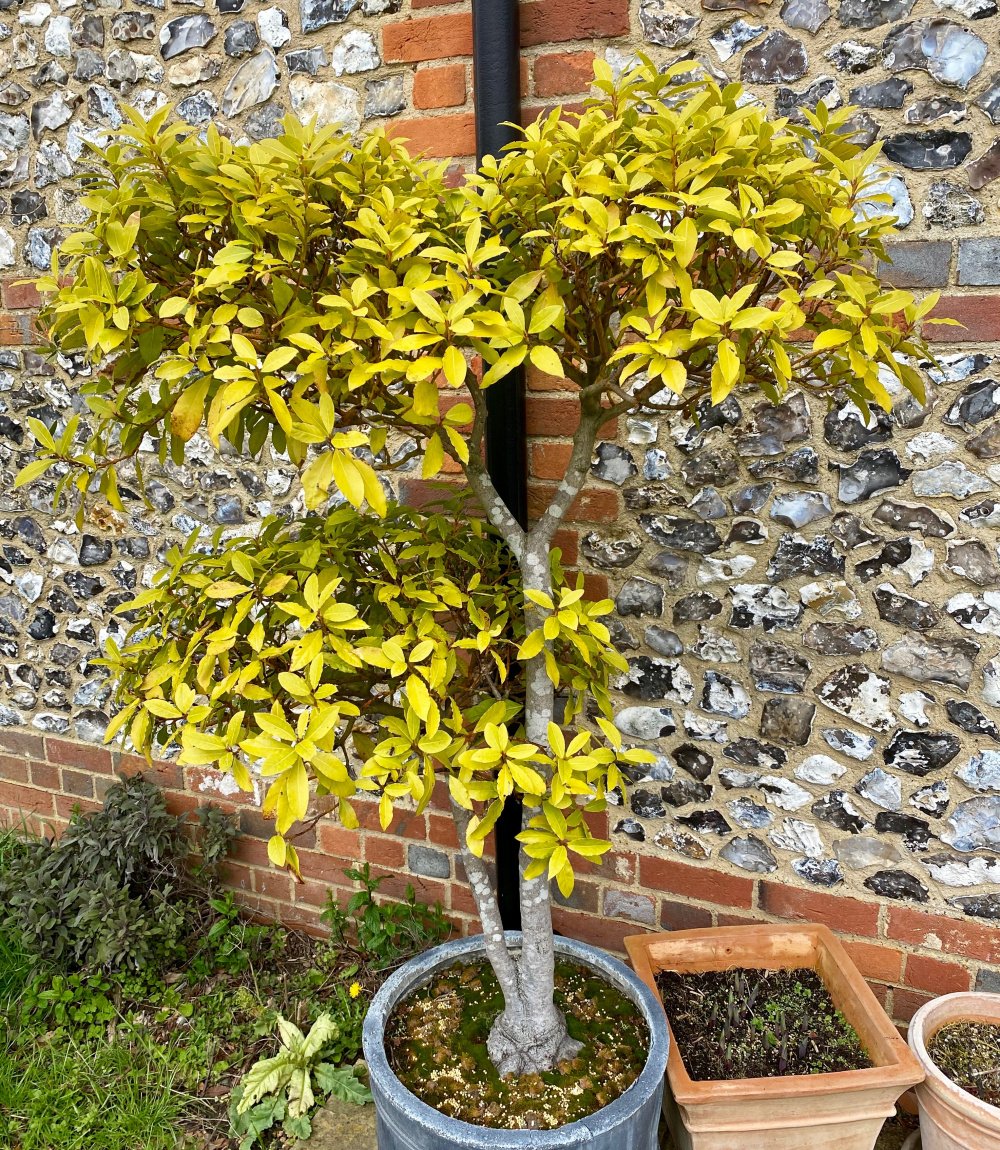This Forum will close on Wednesday 27 March, 2024. Please refer to the announcement on the Discussions page for further detail.
Baytree turned yellow.
 bédé
Posts: 3,095
bédé
Posts: 3,095
Not my tree but a non-garden has askeded my help. I am stumped. Can anyone help with a diagnosis and, hopefully, a cure.

I last saw this bay pre-covid when it was a healthy green. It has become yellow over the last 3 years. It is budding up healthily.
The tree is about 20 yeas old, in this pot ca 10 years, JINo3. It was at that stage neglected, and I advised pruning it. Which they did to its current shape. I think it has had some occasional sprinklings of growmore.
I have suggested Sequestered Iron, but I doubt if the owners will do this soon. I doubt whether it is iron deficiency., but thought it harmless enough to try.

I last saw this bay pre-covid when it was a healthy green. It has become yellow over the last 3 years. It is budding up healthily.
The tree is about 20 yeas old, in this pot ca 10 years, JINo3. It was at that stage neglected, and I advised pruning it. Which they did to its current shape. I think it has had some occasional sprinklings of growmore.
I have suggested Sequestered Iron, but I doubt if the owners will do this soon. I doubt whether it is iron deficiency., but thought it harmless enough to try.
location: Surrey Hills, England, ex-woodland acidic sand.
"Have nothing in your garden that you don't know to be useful, or believe to be beautiful."
"Have nothing in your garden that you don't know to be useful, or believe to be beautiful."
0
Posts
https://www.bluebellnursery.com/Laurus/1581-Laurus-nobilis-Aurea.html#:~:text=(Golden Bay) Laurus nobilis ',particularly good for winter colour.
Greenman used the phrase. "started to turn yellow". I have seen that in other plants and it is a slow and partial process. This is definitely not the usual chlorosis.
"Have nothing in your garden that you don't know to be useful, or believe to be beautiful."
This is a useful guide and also has a video about yellowing leaves - maybe send them the link?
https://www.gardenersworld.com/how-to/grow-plants/bay-grow-guide/
Without seeing the inbetween stages and pattern of yellowing it’s impossible to say what nutrients it’s deficient in and it’s tricky to be totally sure even then, but that’s gone beyond a simple deficiency, I’d say.
People are awful cruel to bay trees😐
Regarding size of pot, the owners' ideas about aesthetics are important. Any plant would always prefer to be in the open ground in its home country. But, I agree, a bonsai would get regular compost changes, root pruning and feeding.
When I repot my own bay pot-grown trees, it's quite an effort, a strong man's job. If it is to go back into the same size pot, then removing excess compost and pruning roots is a skilled craft. I can't see the present owners doing that. I'll have to break the news gently. The JINo3 was at my insistence, they would normally use plain soil: clay with many flints in their present property.
"Have nothing in your garden that you don't know to be useful, or believe to be beautiful."